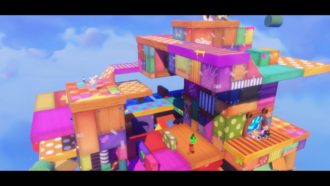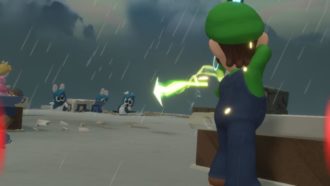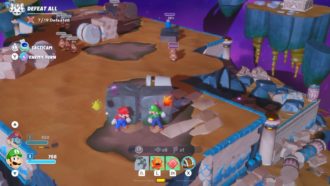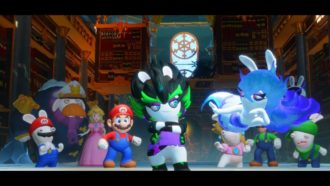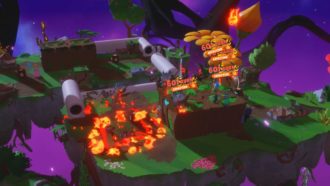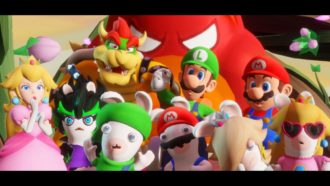Platform:
Nintendo Switch
Released:
October 20, 2022
Publisher:
Ubisoft
Developer:
Ubisoft Paris
Five years ago, an unheard-of combination in games came to fruition. The magnificent, beloved world of Mario joined forces with Ubisoft’s Rabbids. Together, that primary Nintendo cast actually formed perfect harmony with those silly little rabbit mascots, creating what I would argue to be one of the best tactics games on the Switch, Mario + Rabbids Kingdom Battle. Five years later and its follow-up is here in Mario + Rabbids Sparks of Hope. Once more, we have a magical and strategic adventure that is far better than it has any right to be. With a revamped movement system and deeper exploration, there’s plenty to be excited (and occasionally hesitant) about.
A Rabbid galaxy
Mario + Rabbids Sparks of Hope sees a quick reuniting of the Mario family and the Rabbids at its start. A new monolithic celestial being called Cursa is the new imposing threat across the whole galaxy. They’ve corrupted some Rabbids and spread a dark matter known as ‘The Darkmess’ everywhere they’ve touched. The crew then takes a journey into the stars, travelling between planets and restoring them to their former glory, toppling formidable foes along the way.
What was most exciting about the original Mario + Rabbids was the exciting revitalising of the Mario formula. Say what you will about Ubisoft’s rabbit mascots and their somewhat annoying vibes, but they’re a welcome mesh. Mario and much of Nintendo’s IPs are under such scrutiny and protection that sadly, I’ve found they haven’t evolved or been that exciting in more recent entries. Like its predecessor, Sparks of Hope has plenty of Mario iconography and fun exploration of its world and characters.
Mario, Peach, Luigi and each of their Rabbid form counterparts return. Joining them for the journey are new playable characters in Rabbid Rosalina and a new original Rabbid by the name of Edge. Picture a Shadow the Hedgehog attitude, complete with punk attire and jet-black hair with green frosted tips. The duo are welcome and gel well with the rest of the cast. Edge is an intriguing character with her own motivations and reasons for teaming up with the rest. Rabbid Rosalina fits just as well as Sparks of Hope takes some iconography from Mario Galaxy. They maintain an adoration for the original Rosalina, despite her never showing her face. Similarly, one of the important collectibles in-game is Starbits, while Sparks, a hybrid of Lumas and Rabbids that play into perks and abilities (more on that later), play a vital role as well.
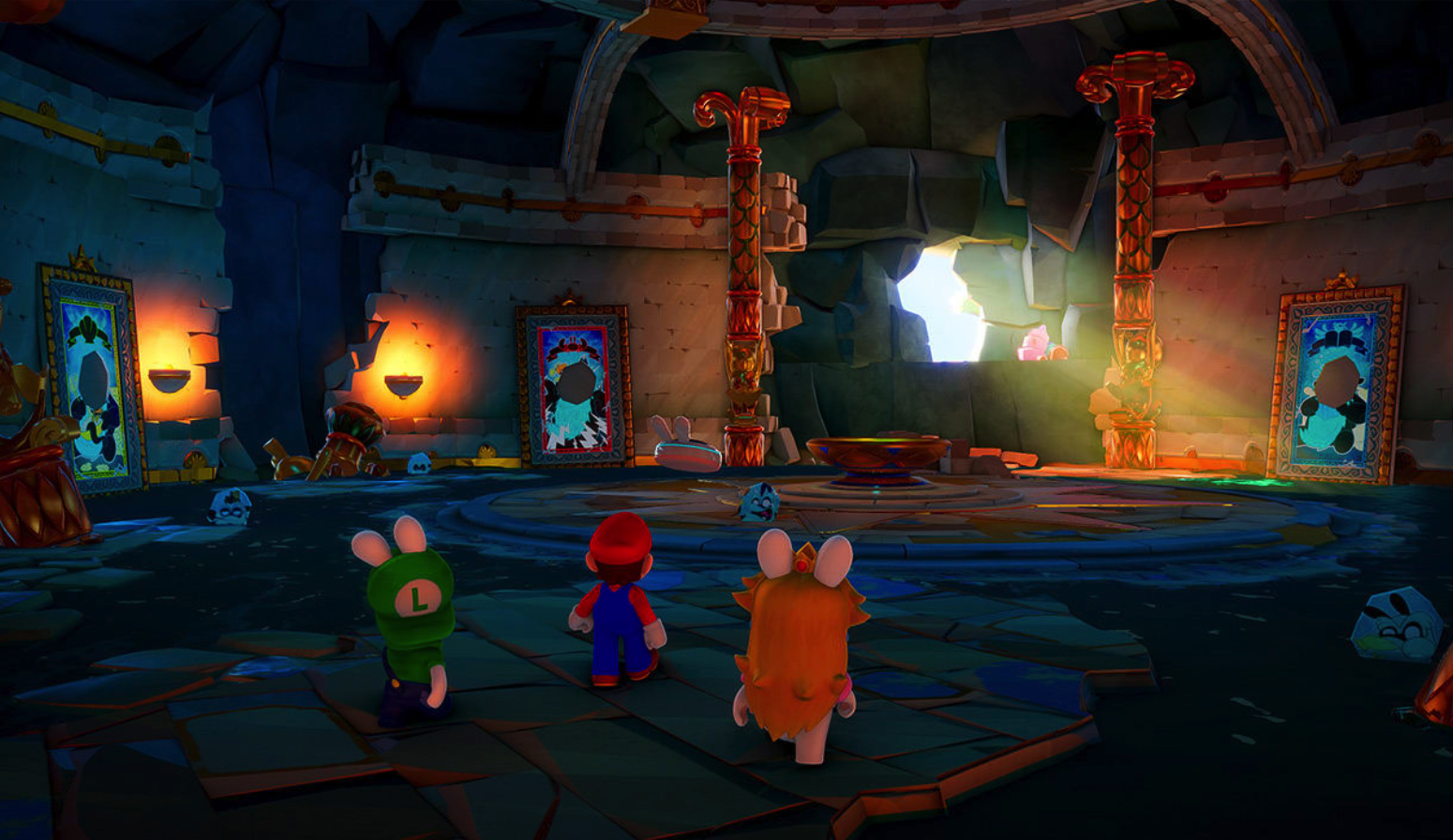
Without hyperbole, this is the most exciting stuff Nintendo is doing with the Mario property these days. It feels like the Super Mario RPG days. Each member has weaponry, whether it’s Peach’s devastating shotgun and umbrella hybrid or Edge’s throwable sword. Party members can be switched in and out in-between battles and come with their own customisation. It even does that charming thing that Mario RPGs often do: Bowser joins the fray, teaming up to defeat the bigger evil.
There’s also just a generous amount of cutscenes. It’s cute and warm seeing Rabbid Peach being a slacker influencer type, obsessed with taking selfies. Mario and co all together again is always welcome and this meshing of worlds still works well. It’s some of the best animation work done in recent memory for Mario games and is in good fidelity for the Switch, an ever-aging console at this point.
What will be the biggest adjustment to overcome for some is that the Rabbids cast is now more voiced. Instead of just making vague noises or a word or two you can find sense in, they’ll have full voice lines. While ultimately remaining a franchise for kids, I don’t think I’m alone in finding the characters at least a little annoying. Now, you’ll have the big obstacle of hearing what Rabbid Mario sounds like. Good luck, you’ll need it.
Taking the fight to ’em
What was engaging about the original Mario + Rabbids is that it served as an excellent and approachable onboarding point for the tactics genre. Mario + Rabbids Sparks of Hope continues that trend even further. The most notable way it does this is that movement is now radial based and not grid-based. Already this will provide more clarity and readability for players, knowing at all times where you’re standing and where you can and can’t go. I won’t miss the days of edge uncertainty when in cover against an object.
What the radial navigation also allows for is a tactful bit of experimentation mid-battle. On your turn, you can move a character as many times as you like within that radius, provided you have not yet fired your weapon. It’s only when you run out of AP points (should you choose to prioritise abilities over weaponry in a turn) are you locked in your position. This low-pressure experimentation means players can play with the verticality on offer and also ensure the move they’re taking outputs the most possible damage.
“Without hyperbole, this is the most exciting stuff Nintendo is doing with the Mario property these days.”
Plenty of other moving parts are going on in-game to aid the player. Each character can slide through foes and add that teeny bit of damage. Jump pads found around the map and team jumps that see characters interacting with one another to boost and launch a teammate into the air are good means of covering more ground. Prior to any battle, you can choose one of three difficulties to fine-tune your experience. It seems like something of a basic and known feature to add but I’ve been around the block and then some with the turn-based genre. Some other genre forays can be gruelling and just need the occasional toning up or down of intensity. Sparks of Hope knows this and prioritises fun.
As it is a game from Ubisoft, you also can expect a skill tree to aid your adventure. Thankfully, with some exceptions, it’s not the most involved and needless. There are your guilty additions such as small passive stat boosts, though they’re fewer and more far between than that of the studio’s other games. Adding the ability to perform extra dashes and team jumps in a given turn for instance is vital in dominating the battlefield both in the ground covered and in the damage you can bring to your foes.
Other than that, the world is your oyster. You’re plenty equipped and will want to mix up your party accordingly. Each party member only has one customisable weapon to use to muddy things less. This makes characters and playstyles more distinguished with fewer redundancies. They also have unique abilities. The aforementioned Sparks can be equipped and moved about between party members to add passive or active effects such as adding elemental damage to your attack. For instance, Bowser’s rocket launcher serves as a good area-of-effect attack that can be paired with a Spark that has a Splash effect, pushing the enemies you’ve hit across the battlefield.
As for the actual battlefields you’ll be placed upon, they feel better than ever. Featuring clever placement of cover, verticality, jump pads and pipes for ground coverage, being environmentally aware of your surroundings is rewarding. Maps are mesmerising too and pair well with the setting of each planet you’re situated on. Battles are now instanced and no longer diegetic in the sense that you can run onto the field. You’re now either transitioned into new fields as part of the story or in random encounters colliding with foes. This takes away from some of the immersion and wonder that was found in the original Mario + Rabbids. While that game was guilty of having somewhat samey levels (less of an issue here), running onto each map felt like you were actually charting a journey across the surrounding lands of the Mushroom Kingdom. Here, it really does feel like going to a point, triggering a quick loading screen, battle, repeat. A little disappointing but ultimately a symptom of the more ambitious level design.
I’ll spare spoiling of particular boss encounters but many are thrilling turns of managing and monitoring several moving factors. Many battles play out with thrilling micro-management of ensuring half of your team of four is focused on dealing with smaller mercs while the others are prioritising taking out focal attack points to weaken the boss’ defences, or the boss itself. You will see a ceiling in the variation of objective types in your regular battles (defeat all enemies, defeat x type of enemies, arrive at x extraction point or hold out for z number of turns) but it’s only a symptom of both the genre and the generous plethora of content and fights laid ahead of you.
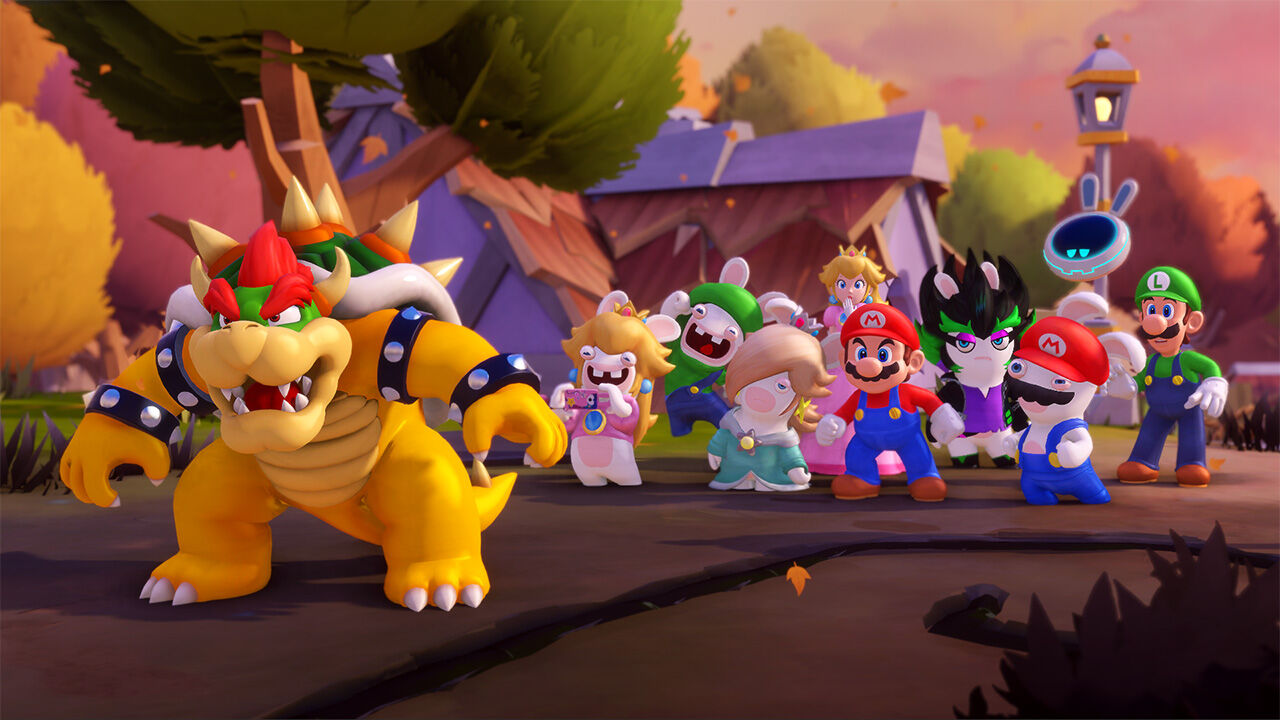
Exploring nooks and crannies and ticking up that completion meter
The big elephant in the room that always comes up in discussion with Ubisoft games is the bloat. Mario + Rabbids Sparks of Hope is guilty of that to a degree. I completed my time with the game in just under 23 hours with a good amount of exploring each world though never to full completion. The fact of the matter is this is a game with lots to see and do, not all of it necessary.
Every planet you visit has essentially two main quests to complete so that you can gather the relevant material to be able to travel to the next planet. Most planets end with a climactic boss battle. What’s peppered throughout are side quests that mostly boil down to more tactics battles. You’ll stumble upon a Rabbid that’ll ask you to eliminate three of x types of enemies. In other instances you’ll stumble upon a section of Darkmess that’ll block off a wing of the map until you interact with it, are transported to a battle, and then upon completion you’re back and that area has been cleared out.
This quest design isn’t particularly the most inspired, and pulling up your map and seeing the plentiful icons that dot it does nothing to help. Similarly, what you’re working towards and earning from these quests is planet coin, a currency used to buy relatively inconsequential weapon skins and memories, the game’s equivalent of readable. The fact you have to earn these is beyond me and can feel like the familiar formula of Ubisoft seemingly needing to fulfil a quota of a certain amount of playable hours and collectibles to unearth. The most valuable use for these coins is a key that can open up a secret area of each planet, filled with more secrets.
At the end of the day, whether I’m motivated or not by the side quests matters less when battles are just that fun. More opportunities to get into some tactics goodness is always a good thing. Just be wary of your limits and don’t hesitate to move on when you grow tired.
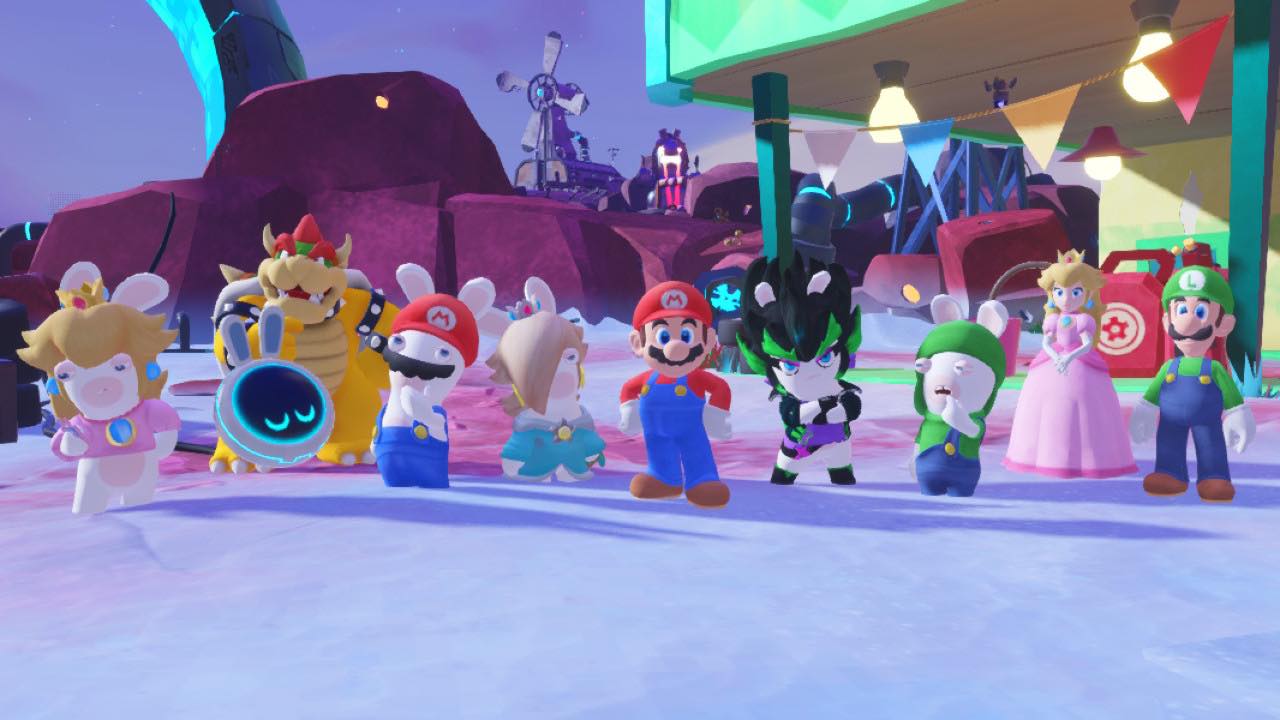
Other occasional activities will be found throughout Sparks of Hope that are fun side distractions. More or less each planet has a recurring Rabbid character that is slotted next to a puzzle with a riddle that you can then use to resolve the puzzle. You can, in certain places, do the classic Mario song and dance of trying to collect all blue or red coins across a path before time runs out. There’s even a neat Super Mario 64 throwback on the icy planet of Pristine Peaks where you have to gather the penguins from Cool, Cool Mountain all in one place.
Each planet in Mario + Rabbids Sparks of Hope is picturesque and wonderful. Beacon Beach is at first rain drenched before you return it to the bright and sunny prestige. The icy and snowy Pristine Peaks are home to blizzards, deep caves and Yeti-like Rabbid figures. Palette Prime is a gorgeous forest set mid-Autumn, with trees yellowing and lakes a crystal blue. Populating all of these environments are familiar iconography, creatures and characters from the Mario franchise and Rabbids.
As you explore these environments, chipping away at puzzles and searching every corner, a wondrous soundtrack is backing the journey. It’s made up of the composer’s dream team that is Grant Kirkhope (Banjo-Kazooie series, Goldeneye and more Rare games), Yoko Shimomura (Final Fantasy and Kingdom Hearts fame) and Gareth Coker (Ori series and Halo Infinite). I don’t exactly have the ear to be able to identify which specific piece of a song is each artist’s handiwork, but the entire OST feels like a magical amalgamation of the talent. Picture catchy and triumphant victory tunes, tense orchestra pieces for the heat of battle and more.
8
Great
Positive:
- New radial movement results in plenty of ways to experiment your way to victory
- Plenty of party and skill makeups to test and use to your advantage
- Some really engaging and atypical side activities are on offer
- A banger soundtrack by a dream team of composers
- A vivid, colourful Mario world once more bringing that magic Nintendo spark
Negative:
- Rabbids now being voiced can be grating
- Guilty of some of that Ubisoft adventure bloat
- Battles are instanced rather than diegetic
Mario + Rabbids Sparks of Hope is probably the most approachable tactics game ever. Featuring new map navigation, dozens of abilities to tool around with and a diverse fantastical cast, it makes for an even more readable experience. The magic spark that I felt had been missing from some of Mario’s more recent adventures is coincidentally back again, amongst Ubisoft’s quirky mascots of all things. Yes, even when the Rabbids can be just that little bit annoying, they’re as equally charming when meshed with the Nintendo cast. At times the overzealous amount of side content may also daunt the player, but never enough to take away from the clever and delightful journey. Sparks of Hope is the most exciting franchise affair we’ve had since Odyssey.
